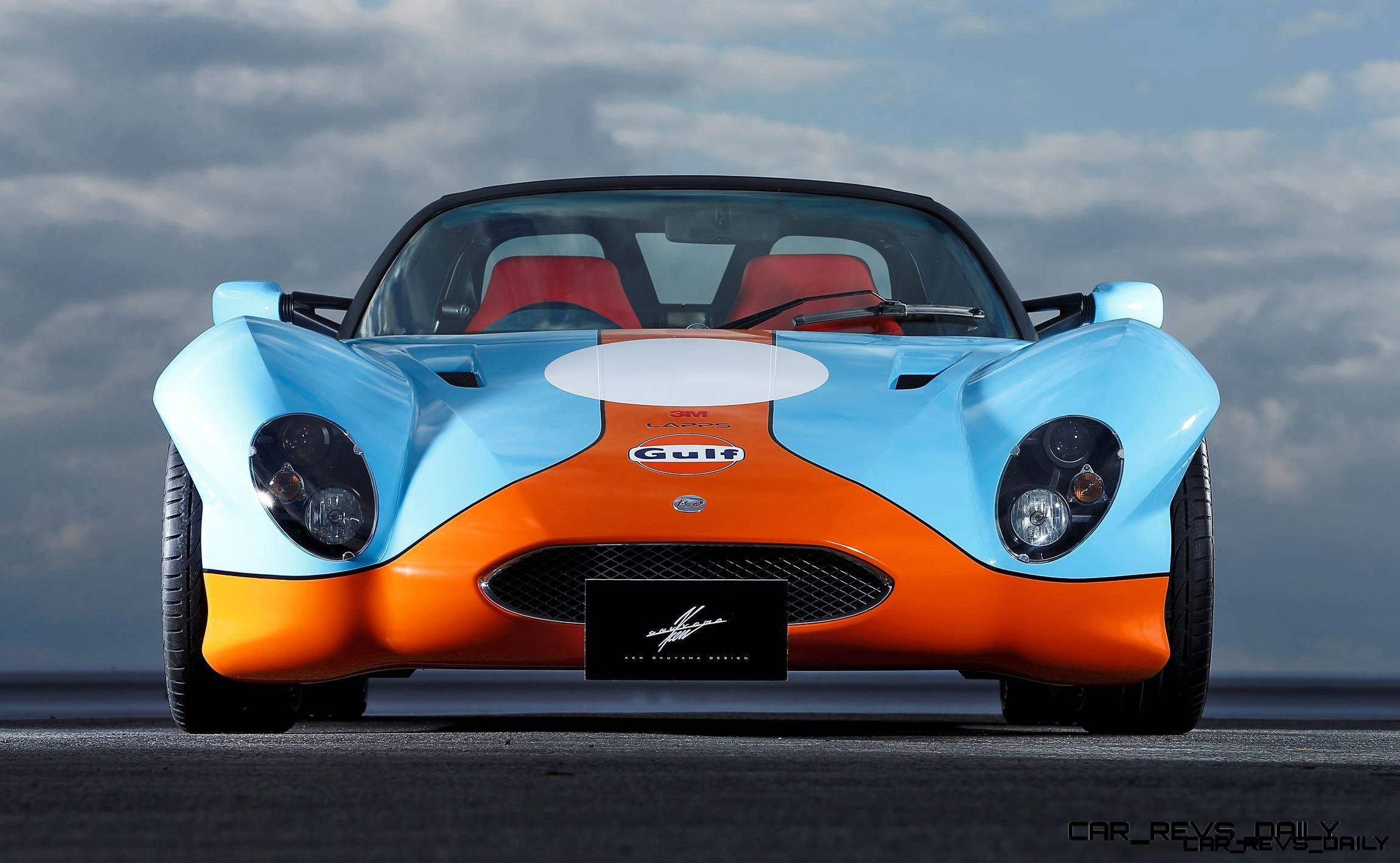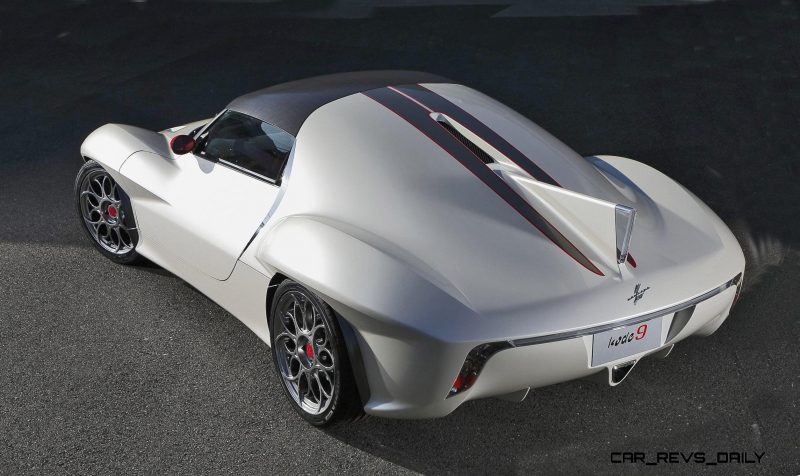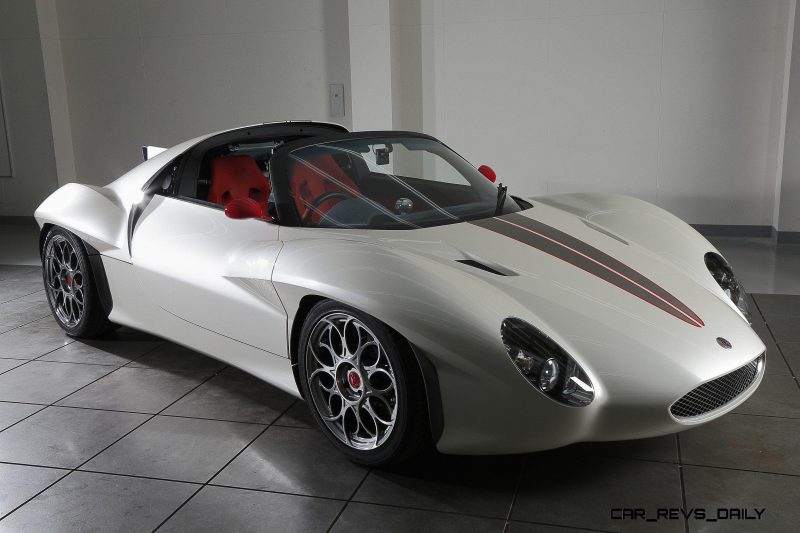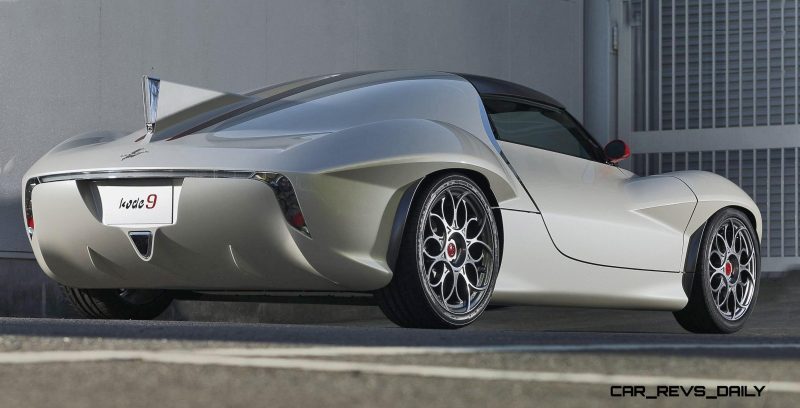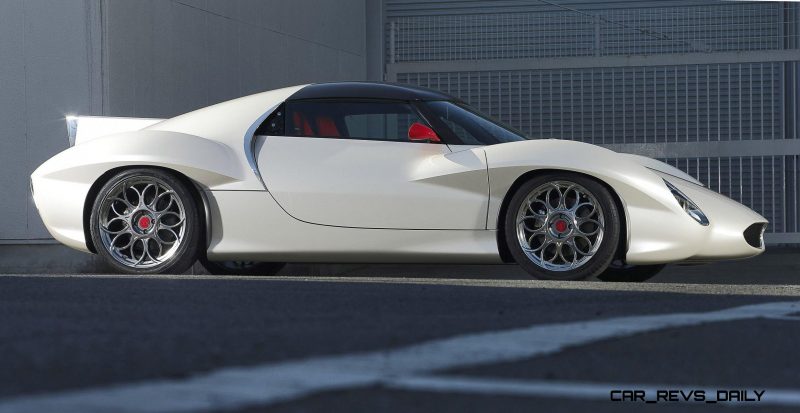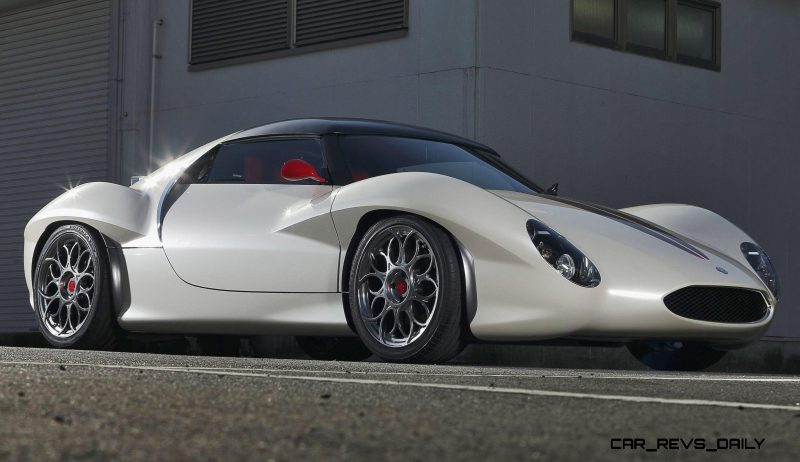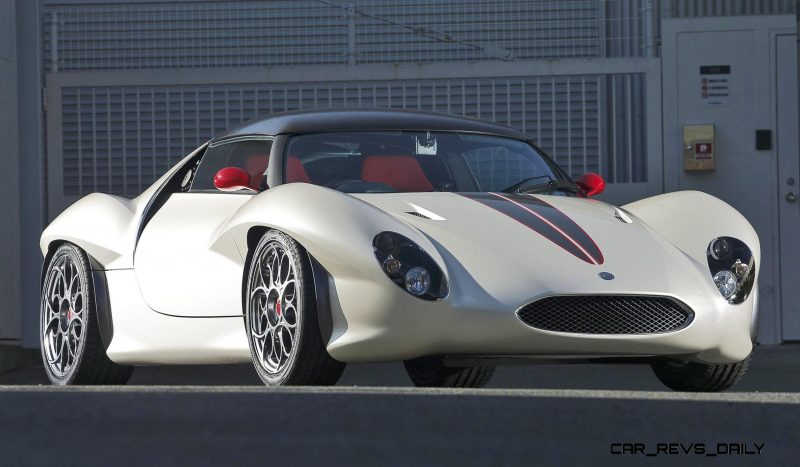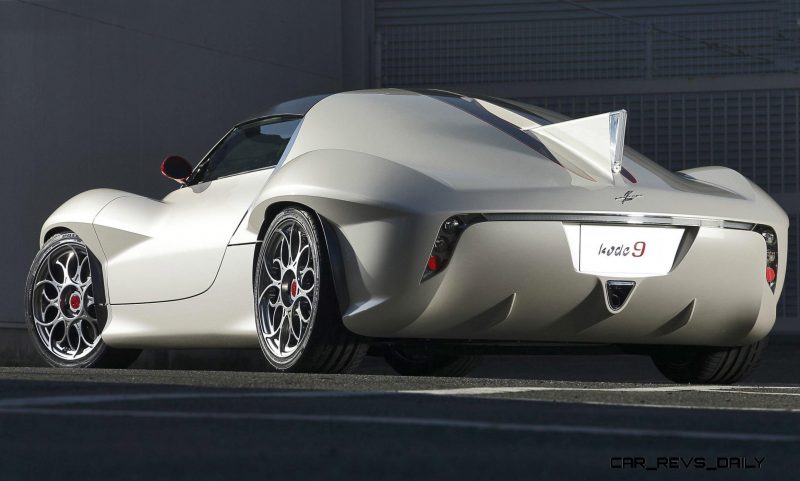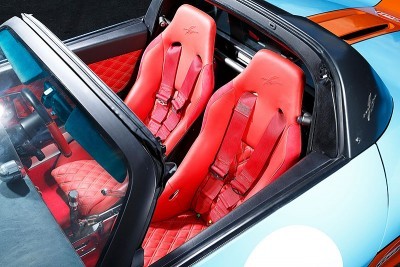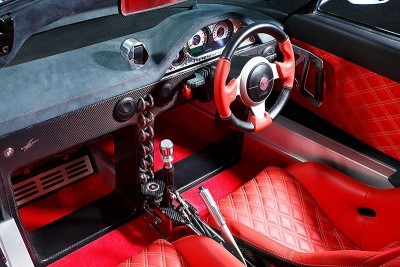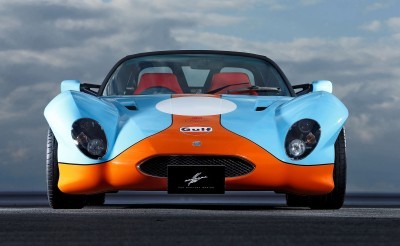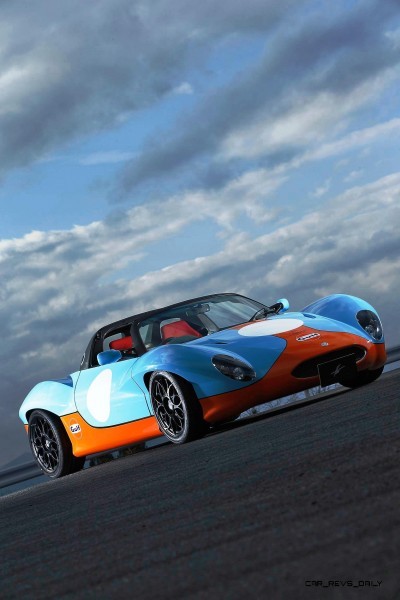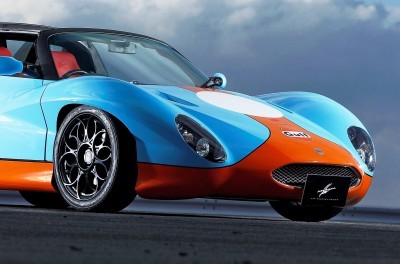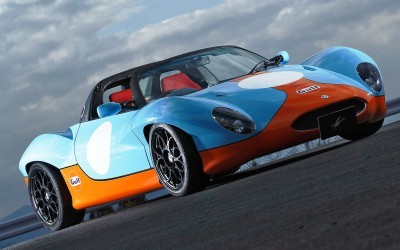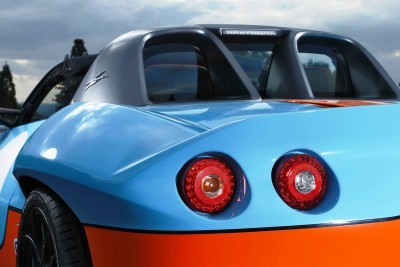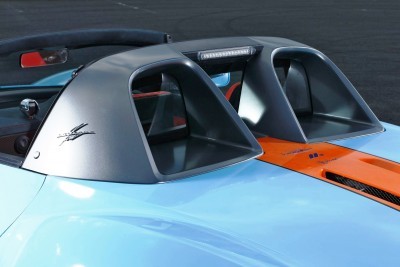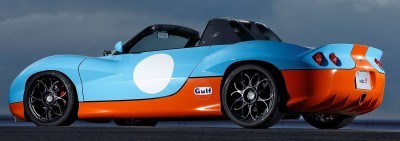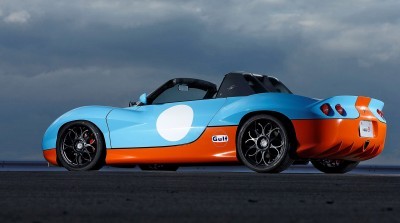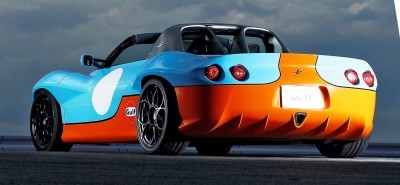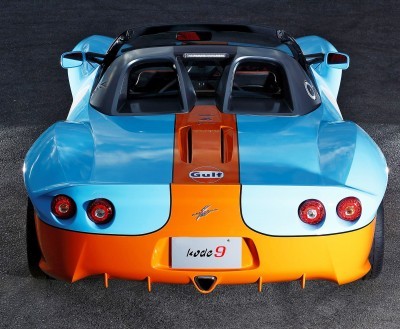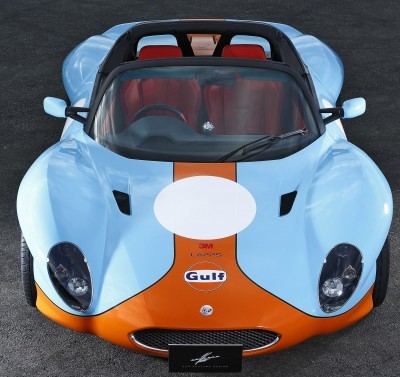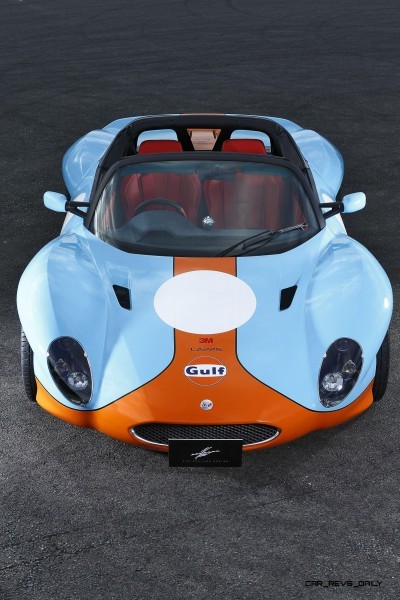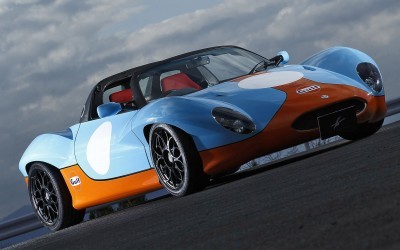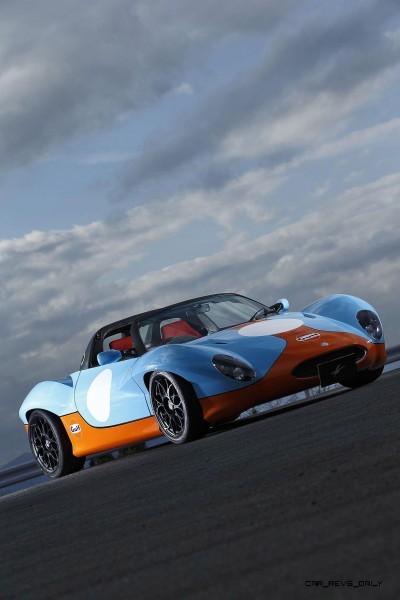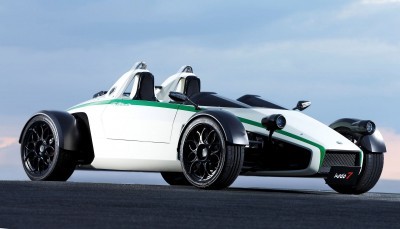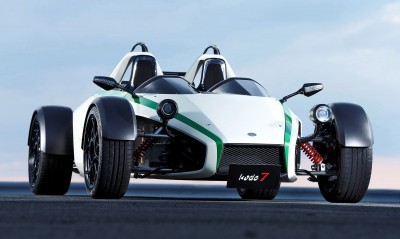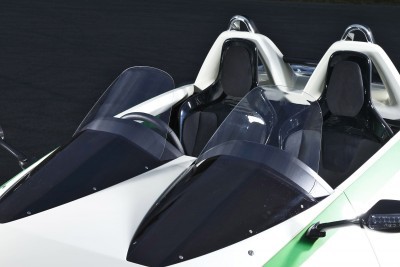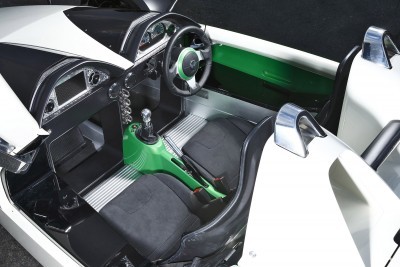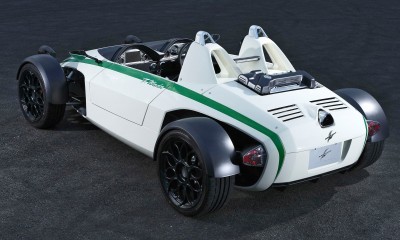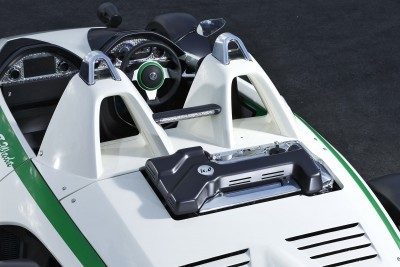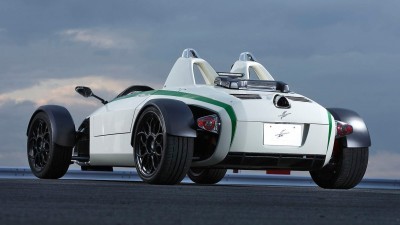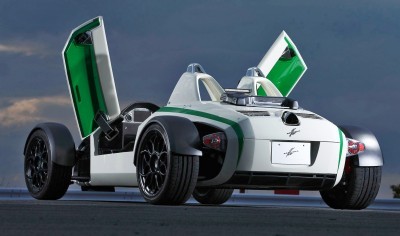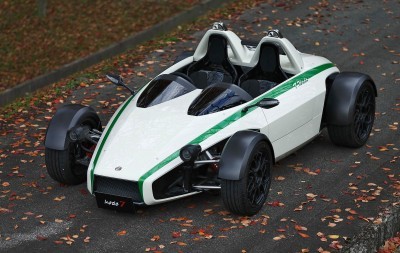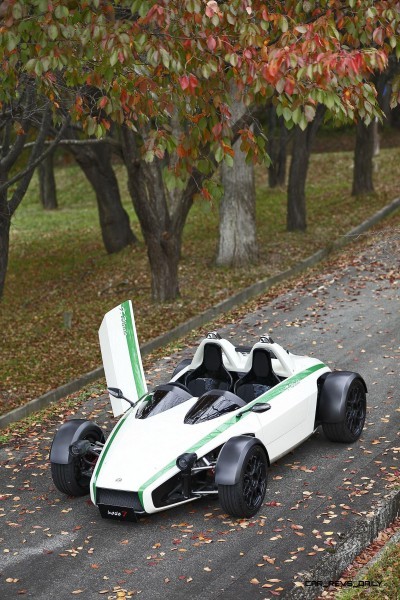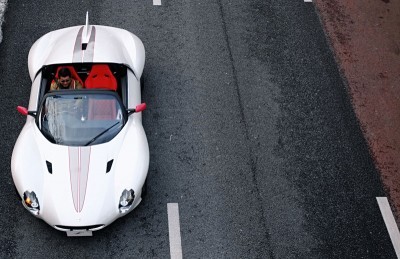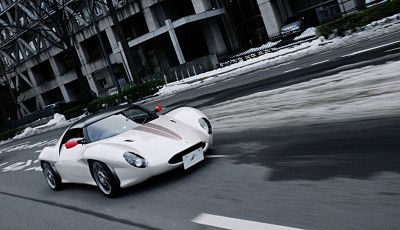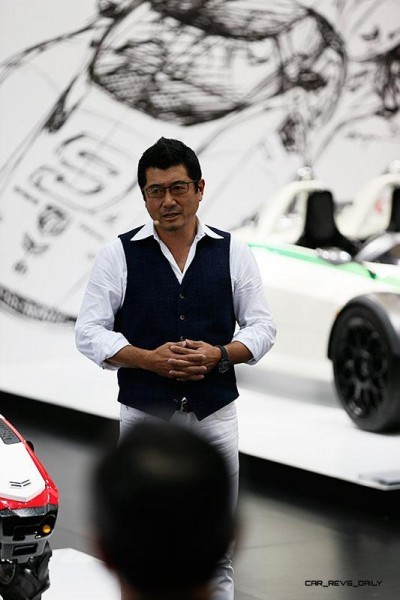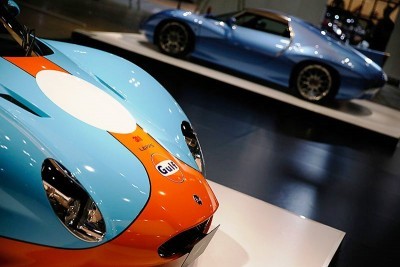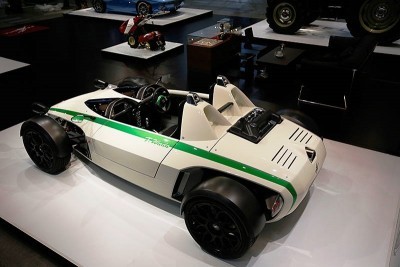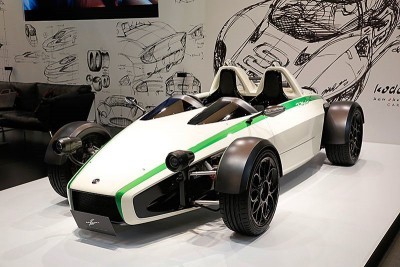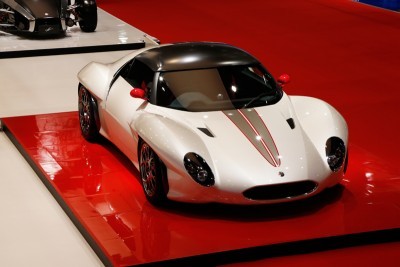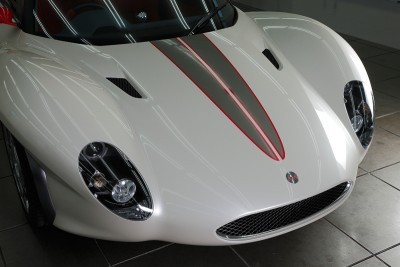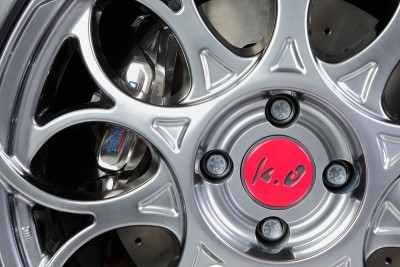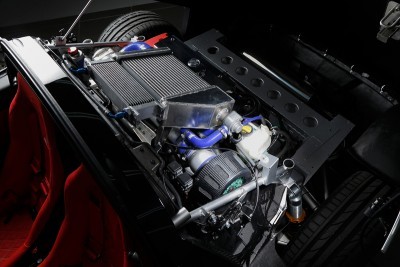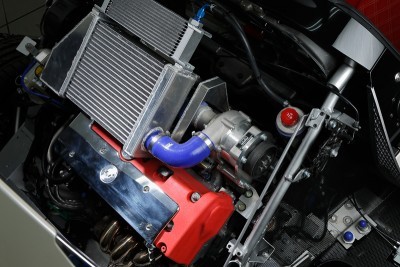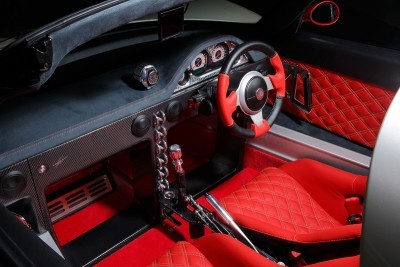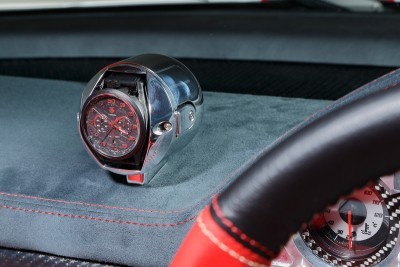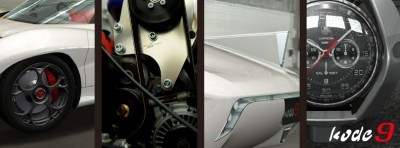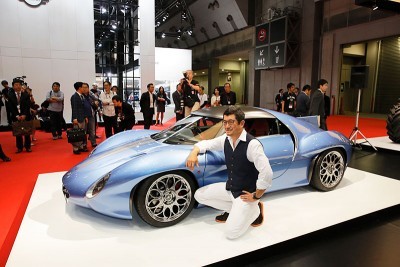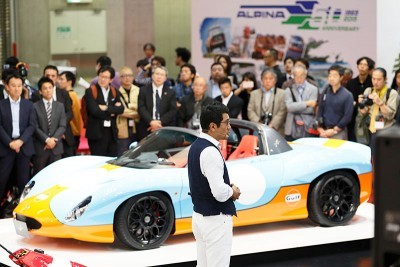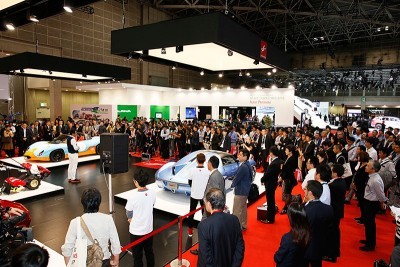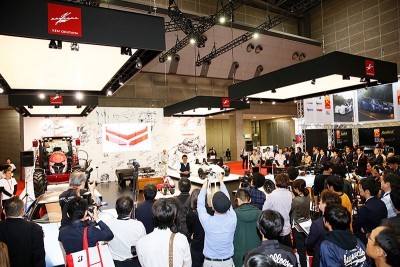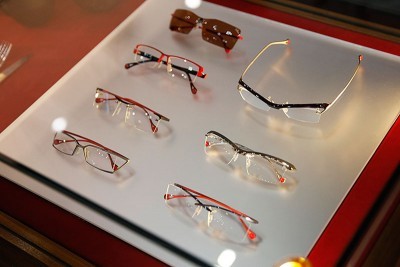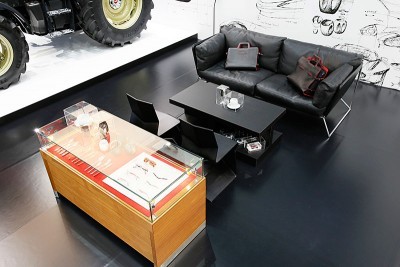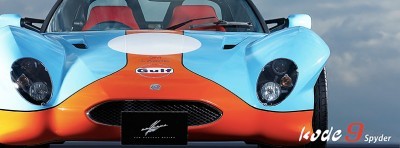For all of Japan’s hard-earned prestige in the car-making business, there are few to no supercar startups emerging from this island nation full of automotive talent.
Perhaps this speaks to the export-centric nature of the industry, or to the plethora or superb global hypercars among which to choose for your fast drives around Fuji speedway and others.
And again still, perhaps the native driver mentality is simply conservative and hyper-urban. Being stuck in traffic in a $200k exotic is just as boring as being stuck in traffic in a Honda S660 ragtop, or perhaps an MX-5.
Few would doubt Japan’s ability to make a bespoke supercar, however, if the right stars aligned to put investment, engineering, design and marketing vision, and of course— big speed — under one roof at the right time.
Ken Okuyama Design looks like this rare event: the firm is growing massively since its first vehicles materialized for sale in the form of the Kode7 track car around 2009.
The ethos is: mid-engine, tiny dimensions and curb weight, wild performance and handling, plus concept-car-style exclusivity in every design detail.
The latest production models are the Kode9 and Kode9 Spyder. And despite looking like pure concepts, they are both for sale to car lovers worldwide.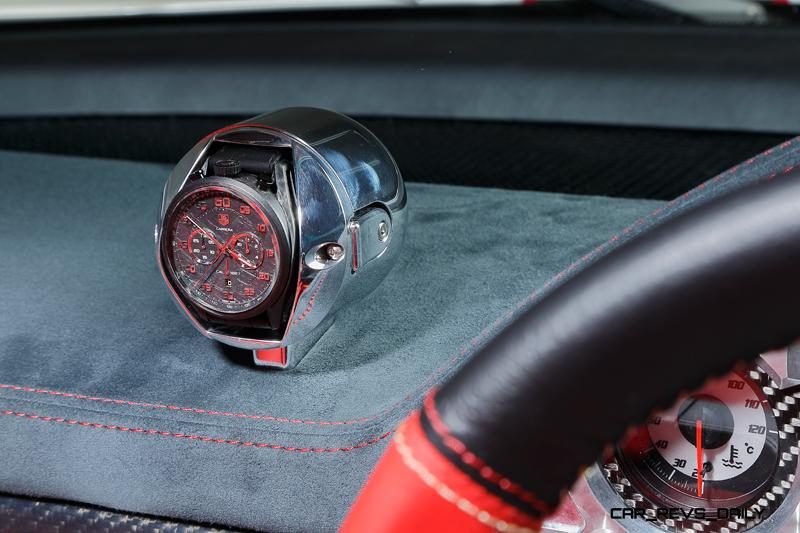

Okuyama is a famed industrial designer with exquisite beauty at his pencil’s edge — regardless of the product category in question. The polished alloy egg dashboard mount for his laptimer/wristwatch is a good example of joyful detailing being top-of-mind when putting his name on anything. Home decor and furnishings, fashion and lifestyle come together at Ken Okuyama Design — but the core passion still rolls on four wheels.
The Kode9 is a gorgeous mid-engine targa with absolutely wild panel shapes: overflowing fenders with extreme convex bulges on all sides make even the ultra-low Kode9 feel as macho as a Jaguar F-Type or Porsche Boxster, if not more so.
The first execution is probably our favorite between the Kode9 in silver/white as a coupe below and the Spyder in Gulf-ish blue/orange racing livery. (Not Gulf-ish: the Kode9 Spyder wears Gulf logos. But the colors are much richer and bolder than actual Gulf Racing, who are not amused by knockoffs.) 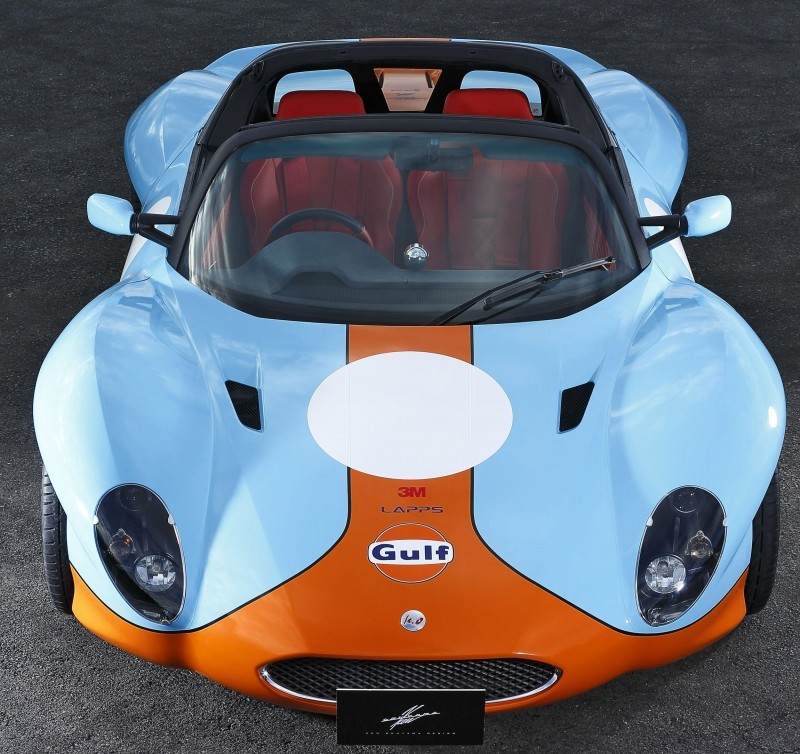
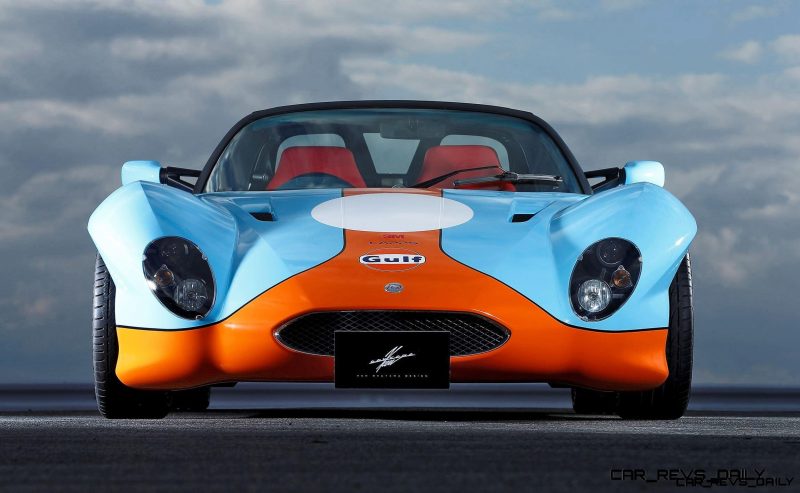
Besides that… Why do we prefer the Kode9 coupe?
Its clamshell engine cover in back is a true work of art. It makes the Kode9 feel like a modern, mini Disco Volante!
This single-piece element made from advanced composites is unlike anything a machine can stamp out of flat steel. Only the hand-formed alloy panels of the coach-built era and the Italian racing scene in the 1950s can compare with the wild form of the Kode9 tail.
Semi-circular cuts in the side are the air intakes for the Kode9’s 370-horsepower supercharged 2.0-liter four-cylinder in back. A rounded, nearly spherical engine cover meets the black roof panel right behind the two passengers’ heads, flowing downward into a rounded tail graphic elegantly and with the joyfulness of a child’s fantasy-car sketches.
A clean surface for this clamshell means no back glass for rear visibility. A side benefit is the freakishly expensive and unique look of the Kode9 from behind. A slim horizontal lightbar of LEDs forms the stop lamps in red, but flips back to crystal grey when off. The tail fin — or horizontal stabilizer in aeronautical terms — is a gorgeous detail. Rising from the center of the rounded rear bumper, this piece houses a vertical CHMSL third brake light nicely, and also looks like the ideal place for a rear-facing camera — ported inside to a screen-based rear-view mirror.
The Kode9 Spyder takes much of the fuselage-shaped fenders and nose into a fresh design — this time sans the giant clamshell rear end we love so much in the coupe/targa version.
In its place is a clean horizontal engine cover, emphasizing the car’s rear-engined nature and eagerness on the racetrack.
The central tub of both cars is a hydro-formed aluminum element that may or may not be sourced from another production car. KOD does not reveal its origins. Unique and bespoke front and rear subframes house the front suspension, steering and crash structures in front, while a unique rear suspension and engine cradle makes a happy home for the engine and transaxle.
[UPDATE: This is a reskinned Lotus Elise. Knew we’d seen that windshield graphic somewhere. The wing mirrors are a dead giveaway. As is the cabin on second look. Eye roll.]
Unfortunately for the Spyder, the tail treatment is just too generic for our eyes. Off-the-shelf quad round brake lights live beneath an integrated flip spoiler at the back edge of the Kode9 Spyder, recalling Can-Am Spyders from all the great racing marques in the 1960s and 1970s.
The look is just not very special or evocative around back, hurting one of the Kode9 coupe’s coolest angles mortally.
Another source of cognitive dissonance for the Kode9 Spyder is its 1950s-feeling curvature in the nose and fenders — a modern expression of the primitive aero insights from the era.
But then we have this questionable Gulf livery. Gulf’s iconic race colors did not materialize until around 1966. Not a huge deal, but for an exotic supercar, authenticity is extremely important to shoppers. Any whiff of kit-car looks about the Kode9’s tail, plus this paintwork, makes the whole thing feel cheap.
Cheap is not a good impression for the Kode9 to leave viewers — purely because actually buying and owning own of these ultra-rare machines are extremely expensive.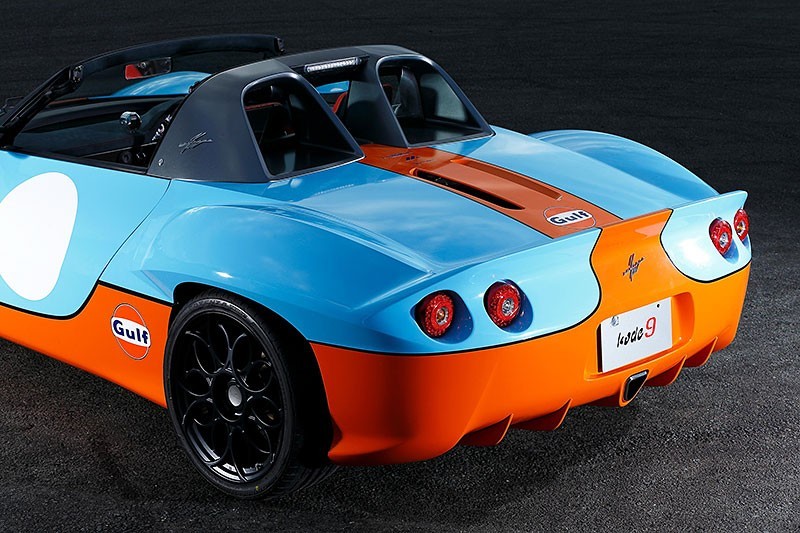
The ultra-light 1500-pound curb weight of the Spyder is thanks to weight-saving materials, dropping about 200-pounds versus the coupe/targa. Also a drop in power: the Kode9 Spyder show car runs a 1.8-liter four-cylinder with, we believe, atmospheric induction. (No turbos or supercharger as on the Coupe.)
Ken Okuyama Design does clarify that the buyer can specify what engine to use when ordering their own. That flexibility is nice, but is likely limited to four-cylinder engines due to simple packaging restrictions.
All in, we’d ballpark a $100k price for either of the Kode9 models, but pricing is firmly on-application-only and sales handled by the flagship boutique for sales worldwide. (We’ve inquired with the firm on pricing and availability, and will update this article if they respond.)
Road legality for both in Japan is awesome and extends to numerous other Asian nations… but not the USA as of yet.
Our main concern with the Kode9 is fairly predictable: the car is so small, but so expensive. So unique as a supercar, but also not (anywhere) near the 911 Turbo or 488 GTB in performance.
What we have here is perhaps the spiritual inspiration for the Alfa Romeo 4C — itself an aspiring supercar facing a bit less excitement among possible buyers when they learn it only has a 1.75-liter turbo with about 240 horsepower.
We see great things for Ken Okuyama Design, and hope to see more of their design vision come to life in the coming years.
Our one piece of advice? Go bigger and much faster. More exotic. A car from Okuyama with twice the power, a 550HP GT-R engine or perhaps RC-F V8, plus concept-like looks? That would be a much more enticing prospect for the Dubai and Singapore hypercar crowds. And with a price ballpark of $150k, would also represent far better ‘value’ to prospective buyers.
2016 Ken Okuyama Design KODE9 SPYDER
kode9 スパイダー
kode9 Spyder
東京モーターショー2015にて発表された、オープンエアを楽しむことができるライトウェイト・スパイダーです。
kodeシリーズに設定される2座ライトウエイト・スパイダーモデルで、クーペモデル譲りの基本プロポーションの持つ魅力をひたすらシンプルにまとめ上げ たスタイリングコンセプトは、よりエレガントな表情を醸し出し、力強いフェンダーアーチはリアルスポーツカーとしてのアイデンティティを表現します。
The kode9 Spyder prototype, a lightweight ‘wind‐in‐the‐hair’ spyder headed for production in 2016.
Following in the footsteps of the kode9 coupe, Ken Okuyama Design revealed its world premiere for Tokyo, the lightweight two‐seater kode9 Spyder prototype. This design study takes the original proportions of the kode9 coupe and adds an extra air of elegance, while at the same time, integrating a bold fender arch that gives it the nuance of a true sports car.
クーペのスポーティーさをそのままにオープンエアを楽しむことができるスパイダーは、ボディ剛性、重量増加などのオープン化によるスペックダウンは一切ありません。それどころか、各種ボディ構造の改良やソフトトップの採用により、クーペモデルより軽量化を達成しています。
It might boast the kode9 coupe’s sportiness and wind‐in‐the‐air thrills of a spyder, but no compromises have been made in body rigidity or curb weight. In fact, improvements in body construction and software updates have actually reduced the car’s overall weight.
ミッドマウント横置きエンジン
A transversely mounted midengine
ミッドマウント横置きエンジンは、カスタマーの好みにあわせてセレクトが可能です。東京モーターショー展示バージョンはスーパーチャージャー付き 1.8 リッター4気筒エンジンが搭載されており 780kg の軽量ボディ(ライトウェイト・カーボンファイバー仕様)とのコンビネーションにより、低重心化されたボディ構造と相まって世界最高レベルのハンドリング をお楽しみ頂けます。
Like the coupe, the kode9 Spyder is configured for a transversely mounted midengine layout, but the customer may select their own brand of engine. Our 780kg (lightweight carbon fiber body version) display model combines a supercharged 1.8 liter, 4‐cylinder engine with a low center of gravity and
inspired sports car dynamics to deliver world‐class levels of handling.
受注
Production on orders
2016年生産を予定しており、限定数 5 台の受注を東京モーターショーの公開をもって開始致しました。価格は仕様によって異なるため KEN OKUYAMA CARS にてお見積もりいたします。
KOD commenced taking a limited run of five orders from the day the motor show opens. Price will depend on specification, so please make enquiries directly to Ken Okuyama Cars.
2016 Ken Okuyama Design KODE9

kode9
東京モーターショー2013でワールドプレミアを飾った、新型クーペ。レースカーとスポーツカーの中間に位置するスパルタンなライトウエイトスポーツカーです。
基本プロポーションの持つ魅力をひたすらシンプルにまとめ上げたスタイリングは、現在の解りづらい複雑なカーデザインへのアンチテーゼでもあります。
Part race car, part sports car, the kode9 is a concept that employs stunning but simple proportions and a driving experience to rival some of today’s greatest sports cars. “This is my message to today’s car industry which seems stuck in a rut of overly complicated lines and styling based on the lowest-common-denominator,” says Okuyama.
370PSのHKSスーパーチャージャー付き2リッター4気筒ハイパワーエンジンと890kgの軽量ボディに、高性能4ポッドブレーキ、ピローボール付き翼断面サスペンションアームを採用したフルアジャスタブルサスペンションなどを装着。
現代の車が忘れてしまった荒々しいスポーツスピリットをドライバーに与えてくれます。この新型車には、TAG Heuerとのコラボレーションによる新型限定生産腕時計TAG Heuer Carrera CMC kode9 Limited、そしてKEN OKUYAMAによる新型TAG Heuerボストンバッグをインテリアの一部として搭載し、kode9と共にワールドプレミア発表いたしました。
This street-legal clubman racer incorporates the central section of a hydro-aluminum chassis, but with front and rear chassis sections specially designed and unique to this car. in-house developed wet carbon components, manufacturing technology using the latest 3D printers, Yamazaki Mazak’s precision CNC cutting technology and the latest aerodynamic trends in a package that tips the scales at just 890 kgs.
Powered by a Japan-sourced 2.0-liter, 4-cylinder engine with HKS supercharger, the kode9 generates an impressive 370 hp. All suspension components are unique to this coupe together with its fully adjustable suspension setup. And with specially fitted 4-pot Akebono brake calipers, the kode9 guarantees unlimited fun behind the wheel.
東京モーターショー 2015
TOKYO MOTOR SHOW 2015
2015年10月30日から11月8日まで東京ビッグサイトにて行われた第44回東京モーターショー。
KEN OKUYAMA DESUGNは、2013年の東京モーターショーにて発表した2モデルをベースとしてkode7 SeriesⅡ(コードセブン シリーズツー)、kode9 (コードナイン)、今回の展示の目玉、kode9 Spyder (コードナイン スパイダー)量産プロトタイプの3台をワールドプレミアモデルとして公開しました。
“The 44th Tokyo Motor Show 2015” was held at Tokyo Big Sight from 30th October to 8th November.
Three world premiere models include the kode9 Spyder Prototype, the kode9 production model and the kode7 Series II were unveiled at this year’s show.
加えて、前回の東京モーターショーにて公開した、弊社デザインによるヤンマー株式会社のコンセプトトラクターに引き続き、大型量産モデル YT5113 とミニ耕うん機 YK650MR が展示されました。
更にブース内には、ライフスタイルの一環として夢のある自動車の楽しみ方を提案し続けてきた弊社が企画製作した家具、アイウェア、インテリアプロダクツもコーディネートの一環として展示されました。
At the 2013 Tokyo Motor Show, the company unveiled a Yanmar concept tractor penned by Ken Okuyama Design. This year, a flagship production‐ready tractor(YT5113) is shown as well as a mini tiller (YK650MR).
In addition to our ongoing development of fun, dream‐inspiring cars, KOD also displayed our own unique brand of furniture, eyewear and interior products.

Tom Burkart is the founder and managing editor of Car-Revs-Daily.com, an innovative and rapidly-expanding automotive news magazine.
He holds a Journalism JBA degree from the University of Wisconsin – Madison. Tom currently resides in Charleston, South Carolina with his two amazing dogs, Drake and Tank.
Mr. Burkart is available for all questions and concerns by email Tom(at)car-revs-daily.com.

